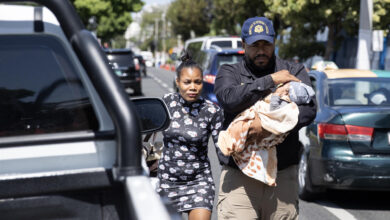Women Are Behind On All The Millennium Goals, Warns UN Report
A recent report by UN-Women has warned about the lag of women compared to men in meeting the 17 millennium goals, also called sustainable development goals, SDGs. These are the figures .

Photo: EFE/Humberto Espinoza ARCHIVE
EFE
Listen to this article
Leer en español: Las mujeres llevan retraso en todos los objetivos del milenio, advierte informe de la ONU
Women are at a disadvantage compared to men in the 17 millennium goals (also called sustainable development goals, SDGs), according to a report made public last week at the UN and led by UN-Women.
Logically, it is objective number 5 (gender equality) on which the most emphasis is placed: not a single one of the goals set for this area has been met , and 54% of countries still lack laws to promote gender equality. equality , while the presence of women in national Parliaments is only 26.7%, a figure slightly higher (28%) in private management positions.
If the current pace continues, the next generation of women will spend an average of 2.3 more hours a day than men on unpaid domestic work or caring for family members.
Women tend to be affected to a greater extent than men in all measurements of poverty, access to health, education, drinking water and sanitation, decent work and so on among the 17 millennium goals, which generally suffered a "break" during the COVID pandemic.
The study quantifies these inequalities with specific percentages, and specifies, for example, that the effects of the climate crisis will push 158 million women into poverty by 2050 and that 236 million will fall into food insecurity.
Inequality in the world of work
In the world of work, if there are 90.6% of employed men out of all men of working age, this percentage drops to 61.4% in the case of women; and taking salaries as a criterion, for every dollar that a man earned in 2019, a woman only earned 51 cents.
It is not surprising that women report situations of discrimination (at work or otherwise) at a rate twice as high as men, and almost double when it comes to discrimination based on their marital status.
Read also: 50 Years of the Coup: Thousands of Women in Chile Make Their Own Commemoration
In places in conflict, where 614 million women live, this figure is already double that of those who lived in 2017.
A new section: the discrimination suffered by elderly women
This year's report includes a section on the particular discrimination suffered by elderly women (over 65 years old) , something that is not a mere detail in a world where 10% of the population is already over that age and in which "ageism" already constitutes a discriminatory criterion in itself.
"Older women are more likely to be widowed than men, less likely to remarry and more likely to live alone, three aspects that worsen their economic insecurity," recalls the report, which specifies that women, to a much greater extent than Men reach old age without assets, savings, pensions or social benefits.
Only 56 of the 116 countries with available data guarantee some type of pension to women, and in the rest they end up paying the consequences of a life with interrupted careers, part-time jobs, lower salaries and unpaid tasks.




